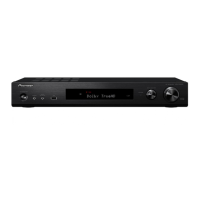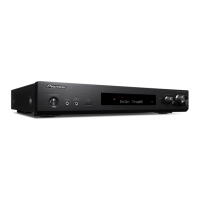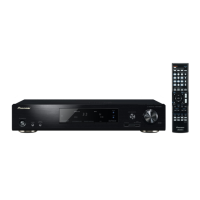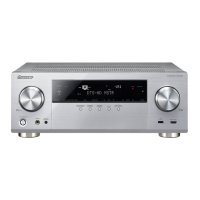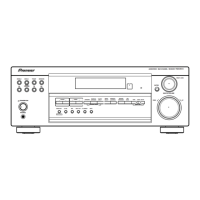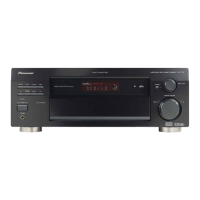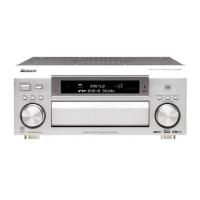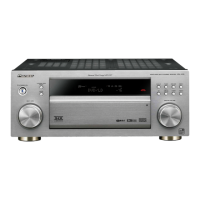
Do you have a question about the Pioneer VSX-S500-K and is the answer not in the manual?
| Receiver type | Surround |
|---|---|
| Frequency range | 5 - 100000 Hz |
| Output impedance | 4 Ω |
| Input sensitivity | 200 mV |
| Audio output channels | 5.1 channels |
| Audio A/D Converter (ADC) | 24-bit/96kHz |
| Signal-to-Noise Ratio (SNR) | 98 dB |
| Total Harmonic Distortion (THD) | 1 % |
| Dynamic power per channel (4 Ohm) | 100 W |
| Power output per channel (20-20KHz@8 Ohm) | - W |
| HDMI in | 4 |
| AC (power) in | Yes |
| Composite video in | 1 |
| Digital audio optical in | 2 |
| Multichannel audio input type | Terminals |
| Headphone connectivity | 3.5 mm |
| Connectivity technology | Wired |
| Speakers connectivity type | Clamp terminals |
| Audio formats supported | AAC, FLAC, MP3, WAV, WMA |
| Wi-Fi | No |
| AM band range | 531 - 1602 kHz |
| FM band range | 87.5 - 108 MHz |
| Supported radio bands | AM, FM |
| Preset stations quantity | 30 |
| Supported video modes | 1080p |
| Display | LCD |
| Product color | Black, Blue, Silver |
| Audio decoders | Dolby Digital, Dolby Digital EX, Dolby Digital Plus, Dolby Pro Logic, Dolby Pro Logic II, Dolby Pro Logic IIx, Dolby Pro Logic IIz, Dolby TrueHD, DTS, DTS 96/24, DTS Neo:6, DTS-ES, DTS-HD |
| Volume control | Rotary |
| Apple docking compatibility | iPhone, iPod |
| AC input voltage | 220-230 V |
| AC input frequency | 50 - 60 Hz |
| Power consumption (standby) | 0.45 W |
| Power consumption (typical) | 70 W |
| Depth | 317 mm |
|---|---|
| Width | 435 mm |
| Height | 85 mm |
| Weight | 4200 g |
Lists supplied accessories included with the receiver.
Guidelines for safe and stable placement of the unit to ensure proper operation.
Explains the buttons and functions of the remote control for operating the receiver.
Details the controls and indicators located on the receiver's front panel.
Guides on choosing speaker setup plans (A to D) based on your system.
Instructions on connecting stereo and surround sound speakers to the receiver.
How to connect additional speakers using PRE OUT terminals.
How to select different speaker terminal configurations for output.
General advice on making cable connections, including HDMI.
Explains HDMI technology and features supported by the receiver.
How to connect audio components using RCA cables.
How to connect digital components using coaxial or optical cables.
Instructions for connecting video using composite cables.
Explains the receiver's video conversion function for HDMI output.
Illustrates connecting TVs and playback devices via HDMI.
Shows connections for DVD players without HDMI output.
Shows connections for TVs without HDMI input.
How to connect a Bluetooth adapter for wireless audio.
How to connect to a network via LAN for Internet radio.
How to connect to a network wirelessly using a converter.
How to connect AM and FM antennas for better reception.
Tips for improving FM and AM reception with external antennas.
How to connect an iPod to the receiver for playback.
How to play two-channel audio from a USB device.
How to connect audio players via the front panel mini jack.
Final step of connecting power after all components are connected.
How to disable or adjust the automatic power-off timer.
How to turn off the front panel demo display.
Guide to the automatic speaker calibration system.
Troubleshooting tips for MCACC setup issues.
Basic steps for playing audio/video from a connected source.
How to play music content from an iPod using the receiver.
Navigating and playing music files from an iPod.
Methods for browsing and selecting music on an iPod.
Using the remote for basic playback of iPod/USB content.
How to play two-channel audio from a USB device.
Overview of network playback features like Internet radio and PC files.
How to listen to Internet radio stations via the network.
How to play music files from PCs or other network devices.
How to register and play favorite songs or stations.
Steps to configure network settings for Internet radio and PC playback.
How to reset network connection settings to factory defaults.
Specifies compatible PCs and media servers for network playback.
How to authorize the receiver for network access.
Explains technologies used for network playback (Windows Media, DLNA).
Defines terms like aacPlus, FLAC, and Windows Media.
Explains the functionality of the Bluetooth adapter.
How to play music wirelessly using Bluetooth.
How to use the remote control with Bluetooth devices.
Step-by-step guide to pairing Bluetooth devices.
How to play music from a Bluetooth device after pairing.
How to tune into FM and AM radio stations.
How to improve FM reception by switching to mono mode.
How to store favorite radio stations for easy access.
How to recall stored radio stations.
Explains the Radio Data System (RDS) feature.
How to search for radio stations by program type.
How to view RDS information like station name and program type.
How to select listening modes based on source and speakers.
Receiver automatically selects playback mode based on source.
How to achieve surround sound with various sources and speaker setups.
How to use advanced surround effects for different movie/music genres.
How to bypass signal processing for purest audio reproduction.
How to save power while maintaining sound quality.
How to restore sound quality to compressed audio.
How to adjust surround sound mixing for 7.1 systems.
Accessing various audio settings via the TOOLS menu.
Overview of navigating and using the Home Menu for detailed settings.
How to manually configure speaker system settings for optimal performance.
How to specify the speaker configuration and connected terminals.
How to configure speaker sizes and numbers for each channel.
Setting the crossover frequency for bass management.
How to set speaker distances for accurate surround sound.
How to adjust the volume balance of individual speakers.
How to configure PRE OUT terminals for surround back or height speakers.
How to assign input signals to specific terminals like ANALOG AUX.
How to adjust video output settings for HDMI.
How to enable or disable video signal conversion for HDMI output.
How to specify the output resolution for the HDMI terminal.
How to set the aspect ratio for analog video signals output via HDMI.
How to set the automatic power-off timer.
How to enable or disable the front panel demo display.
How to connect devices for synchronized operation.
How to configure receiver settings for Control with HDMI functionality.
Steps to perform before using HDMI synchronization features.
Explains how synchronized operations work with Pioneer devices.
How to use Control with HDMI with non-Pioneer devices.
Warnings and important notes regarding HDMI control.
General troubleshooting advice for common operational issues.
Basic checks for power, sudden switching, and input changes.
Information about the network feature's operation and requirements.
Specific issues and solutions related to wireless LAN connectivity.
Solutions for accessing Windows Media Player via network.
Solutions for issues with accessing Internet radio stations.
How to ensure the remote control is set for network mode.
Troubleshooting for HDMI connection issues like no picture or sound.
Solutions when HDMI synchronized operations fail.
Notes on potential HDMI signal routing issues and configurations.
Explains network status messages and their meanings.
Lists supported music file formats for USB and Network playback.
Information on iPod/iPhone compatibility and usage.
Procedure to reset all receiver settings to factory defaults.
Instructions on how to clean the receiver's exterior.
Technical specifications for audio, video, tuner, and digital sections.
Lists all the parts included in the package with the receiver.
Details licenses for open-source software used in the player.
Disclaimers regarding third-party content services.
